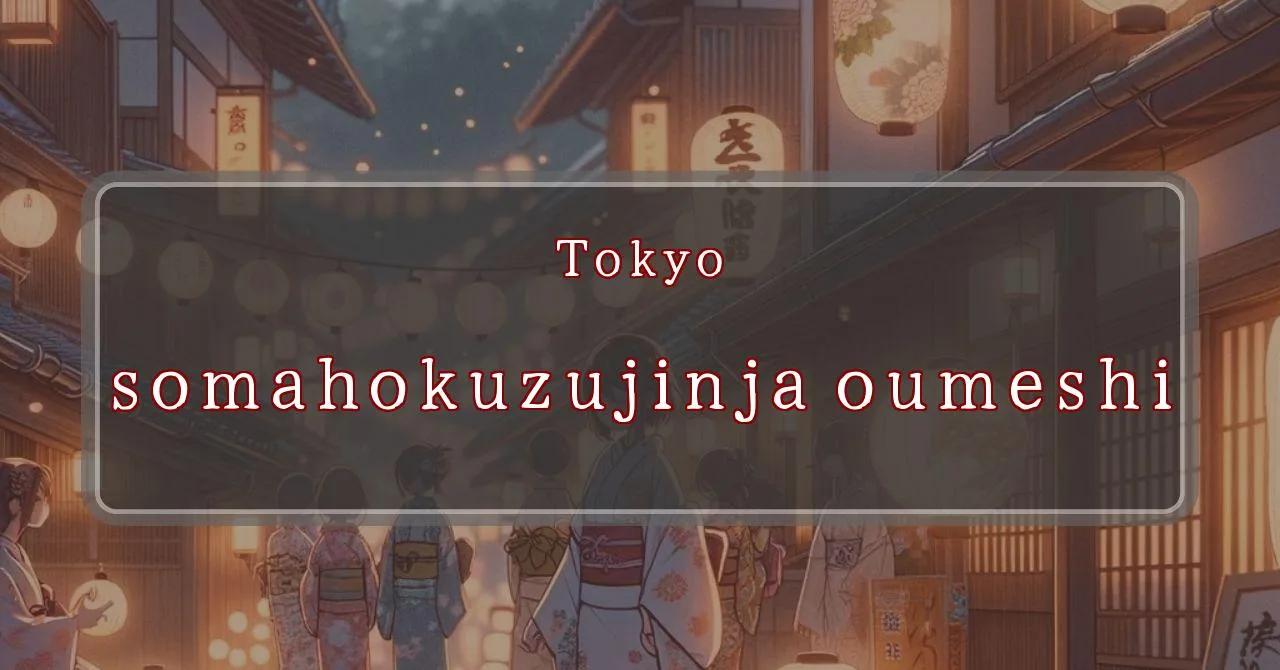A sacred festival with a history of over 100 years, where a portable shrine and floats parade through the streets.
Basic Information
Somahogakura Shrine is a Shinto shrine located in Fujibashi, Ome City, Tokyo, Japan.
- Address: 2-107 Fujibashi, Ome, Tokyo 198-0022
- Phone Number: Not publicly available
- Access: Approximately 40 minutes on foot from JR Ome Line Kawabe Station
- Festival Days: Sunday closest to April 15th
Main Events and Attractions of the Festival
The Somahogakura Shrine Festival is held annually on the Sunday closest to April 15th. The festival features a variety of events and attractions, including:
Mikoshi Procession
The highlight of the festival is the mikoshi procession, where a portable shrine is carried through the streets of Fujibashi by local residents. The mikoshi is decorated with colorful tapestries and streamers, and it is accompanied by music and dancing.
Float Parade
Another popular attraction is the float parade, which features a variety of floats decorated with flowers, lanterns, and other ornaments. The floats are pulled through the streets by teams of people, and they often stop to perform traditional dances and songs.
Gion Bayashi
Gion Bayashi is a type of traditional Japanese music that is performed during the festival. It is played on a variety of instruments, including flutes, drums, and gongs. The music is lively and upbeat, and it helps to create a festive atmosphere.
- Instruments: Flutes, drums, and gongs
- Characteristics: Lively and upbeat music
Blessings and Deities
Somahogakura Shrine is believed to bestow various blessings upon its worshippers, including:
- Abundant harvest
- Good health
- Protection from evil
- Good luck
The shrine’s deities are:
- Takehaya Susanoo-no-Mikoto
- Takehaya Mikazuchi-no-Mikoto
- Futsunushi-no-Mikoto
- Oomaro-no-Mikoto
- Kamu Nao-no-Mikoto
Origin and History
Somahogakura Shrine was formed in 1910 through the merger of two older shrines: Somaho Shrine and Katsura Shrine. Somaho Shrine was originally established by Hirabayashi Echizen-no-Kami Shigeyoshi, the lord of Fujibashi Castle, in the late 16th century. Katsura Shrine, on the other hand, is of unknown origin, but it is believed to have been a local tutelary deity.
Tips and Notes for Visitors
If you plan to visit Somahogakura Shrine during the festival, please keep the following in mind:
- The shrine is located in a mountainous area, so access is limited. It is recommended to use public transportation or a car with a GPS.
- The shrine’s parking lot is small, so it is expected to be crowded during the festival. It is best to arrive early or use public transportation.
- The area around the shrine will be crowded during the festival. Please allow plenty of time for your visit.
Parking Information
Somahogakura Shrine has a small parking lot located on the right side of the approach. However, the number of parking spaces is limited, so it is recommended to arrive early or use public transportation.
Popular Stalls and Food Carts in Recent Years
| Type of Stall | Description |
|---|---|
| Takoyaki | A staple at Japanese festivals. Characterized by a crispy outside and a creamy inside. |
| Jaga Butter | A simple yet popular snack of hot potatoes lavishly topped with melted butter. |
| Baby Castella | Small castella cakes, sweet and fluffy treats enjoyed by children and adults alike. |
| Grilled Ayu with Salt | Fresh ayu fish grilled whole with salt, a savory taste of Japanese summer. |
| Shaapin | A unique gourmet item influenced by foreign cuisine, with a chewy skin wrapping the filling. |
| Okonomiyaki | A Japanese grilled dish where you often choose your own ingredients for a personalized flavor. |
| Cotton Candy | A fluffy, sweet snack that’s extremely popular with children. |
| Chocolate Banana | A banana coated in chocolate, a fun and visually appealing dessert. |
| Kushiyaki | Various types of ingredients skewered and grilled, an easy-to-enjoy snack. |
| Yakisoba | Fried noodles mixed with a special sauce, a fast food favorite in Japan. |



